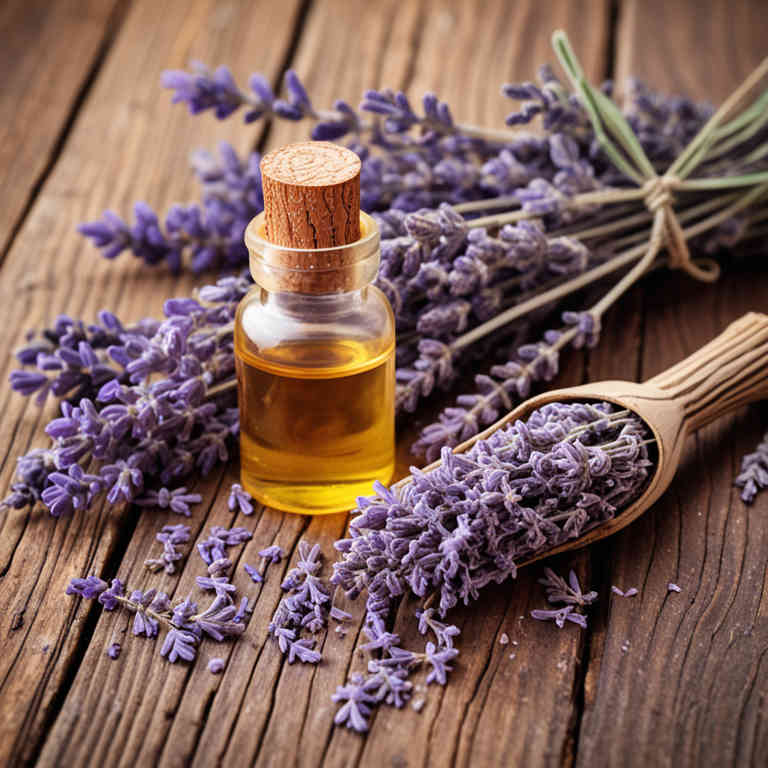Lavandula angustifolia essential oil for medicinal use

Lavandula angustifolia essential oil is a highly valued aromatic oil derived from the steam distillation of the flowering tops of the lavender plant.
It is widely used in herbalism for its calming and soothing properties, making it a popular choice for treating anxiety, insomnia, and stress-related conditions. This essential oil is also known for its antiseptic and anti-inflammatory qualities, which make it useful in addressing skin irritations and minor wounds. In aromatherapy, it is often diffused to promote relaxation and mental clarity.
Its versatility and therapeutic benefits have made it a staple in both traditional and modern herbal practices.
Uses
Lavandula angustifolia essential oil has been used to promote relaxation, alleviate stress, and support skin health for centuries.
Historically, it was prized by ancient civilizations such as the Greeks and Romans for its calming properties and was often used in religious rituals and as a remedy for various ailments. In traditional herbal medicine, lavender oil was applied topically to treat wounds, insect bites, and skin irritations, while its aromatic properties were used to soothe anxiety and improve sleep. Modern uses include its incorporation into aromatherapy, skincare products, and as a natural remedy for headaches and muscle tension.
Today, it remains a popular essential oil in both alternative and complementary medicine practices due to its versatile therapeutic benefits.
Benefits
Lavandula angustifolia essential oil has health benefits such as promoting relaxation, reducing anxiety, and aiding in sleep.
It is known for its calming properties that can help alleviate stress and improve mood. This essential oil is also used to relieve symptoms of headaches and muscle pain due to its anti-inflammatory and analgesic effects. It may support skin health by reducing inflammation and treating minor skin irritations.
Additionally, it has antimicrobial properties that can help in preventing infections.
Constituents
Lavandula angustifolia essential oil active constituents include linalool, linalyl acetate, lavandic acid, camphor, and terpinen-4-ol.
These compounds contribute to its calming and soothing properties, making it beneficial for reducing anxiety and promoting relaxation. Linalool and linalyl acetate are known for their anti-inflammatory and antimicrobial effects. Terpinen-4-ol supports immune function and has antiseptic properties.
Lavandic acid may aid in improving sleep quality and alleviating symptoms of stress-related conditions.
Preparation
To make Lavandula angustifolia essential oil, you will need fresh lavender flowers, a glass distillation apparatus, and a collection vessel.
First, gather high-quality lavender flowers during the peak blooming season, typically in summer. Next, place the flowers in a still and add distilled water, ensuring the water covers the flowers by about an inch. Then, heat the still gently over a water bath to facilitate steam distillation, which captures the essential oil.
Finally, allow the oil to settle, then carefully separate it from the water and store it in a dark, cool place in a sealed glass container.
Side Effects
Lavandula angustifolia essential oil may lead to skin irritation or allergic reactions in some individuals, especially when applied undiluted.
It can also cause phototoxicity if used before sun exposure, leading to increased risk of sunburn or skin damage. Ingestion of the oil can be toxic and may result in gastrointestinal upset, nausea, or even more severe systemic effects. Prolonged or excessive use may disrupt hormonal balance due to its phytoestrogenic properties.
Individuals with epilepsy or seizure disorders should avoid using this oil, as it may lower the seizure threshold.